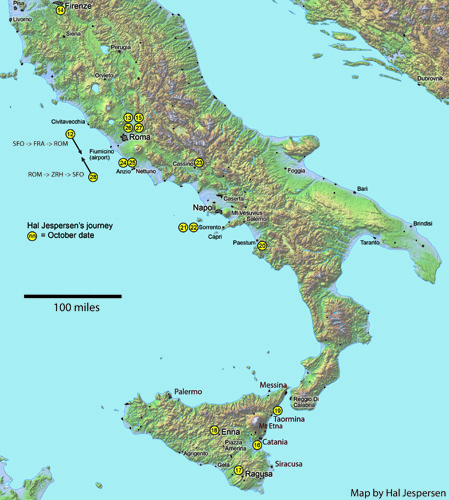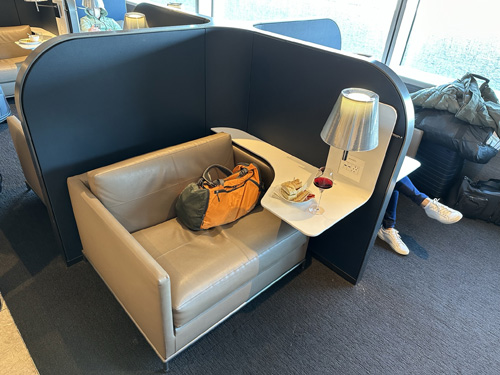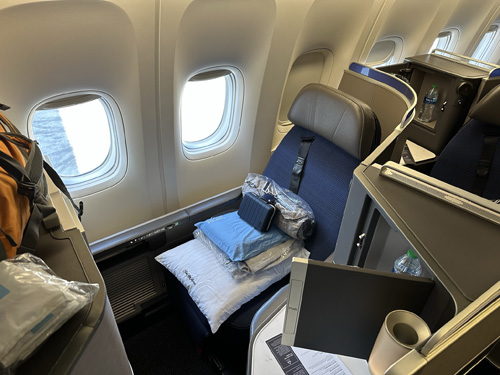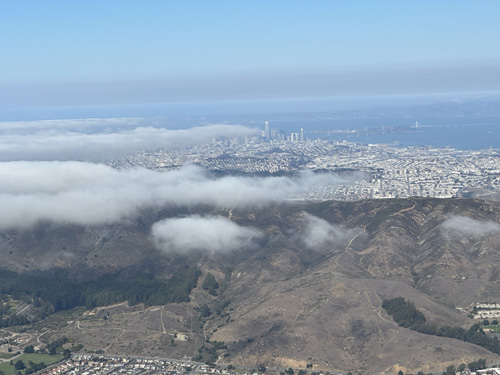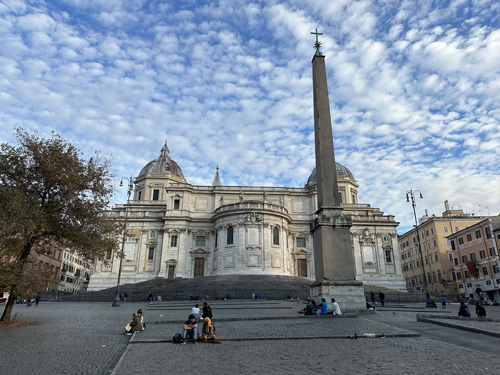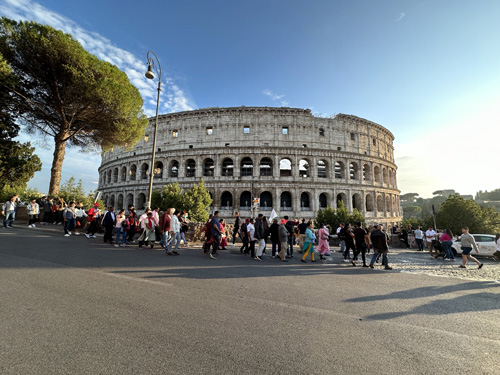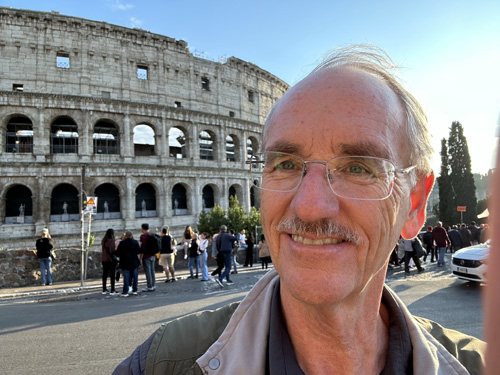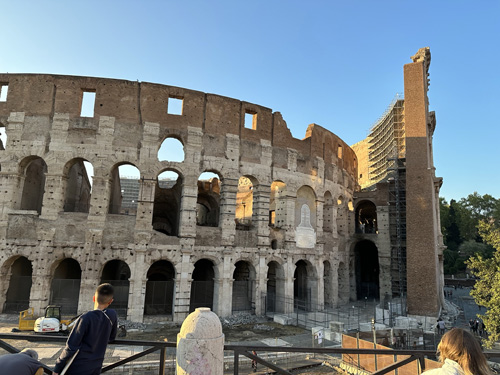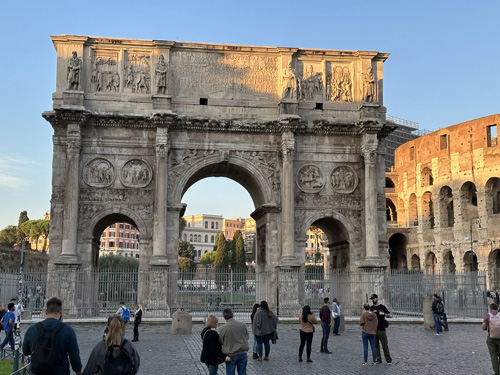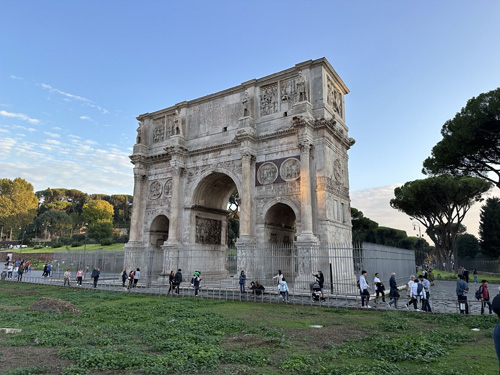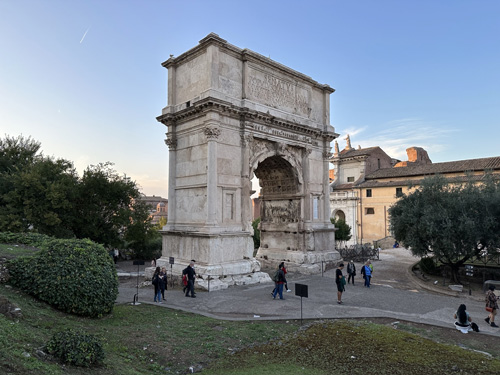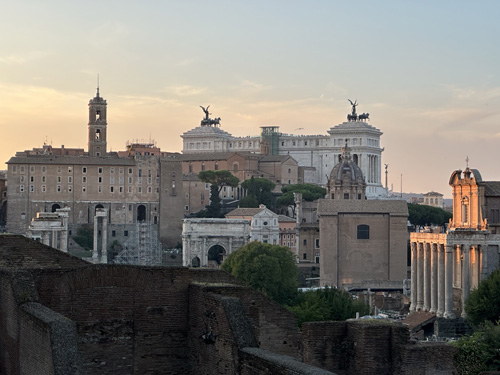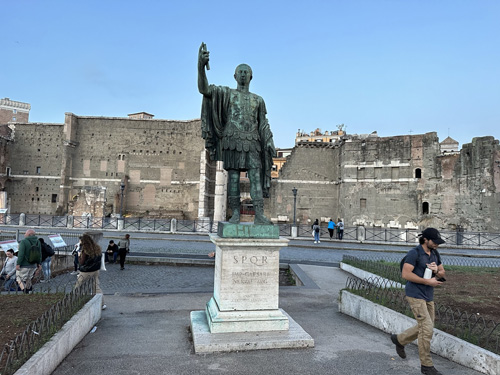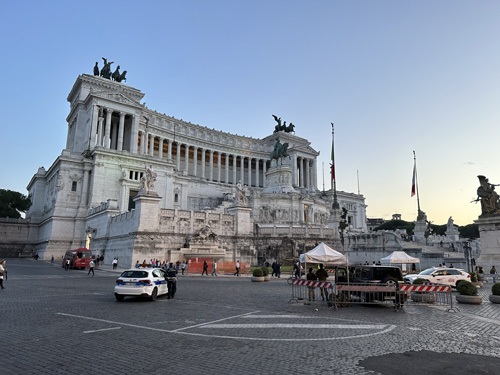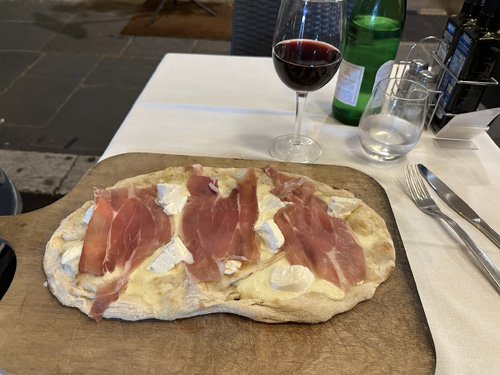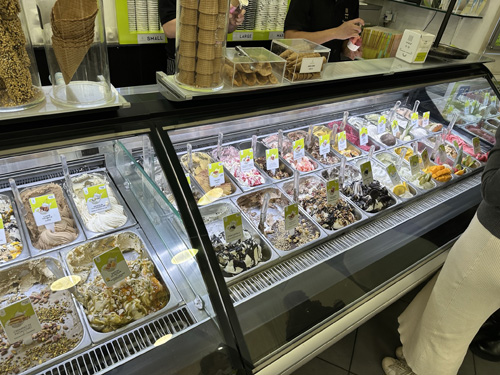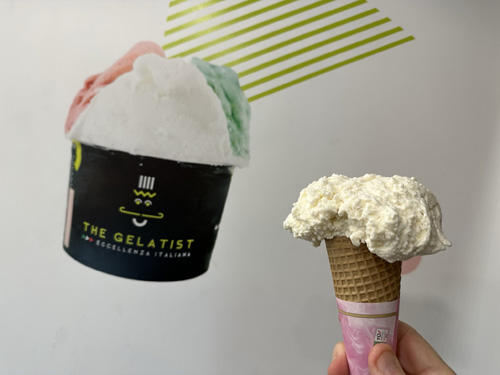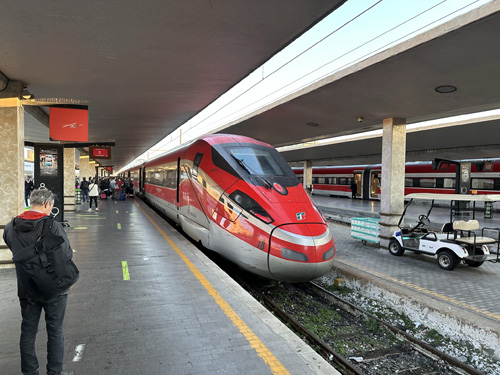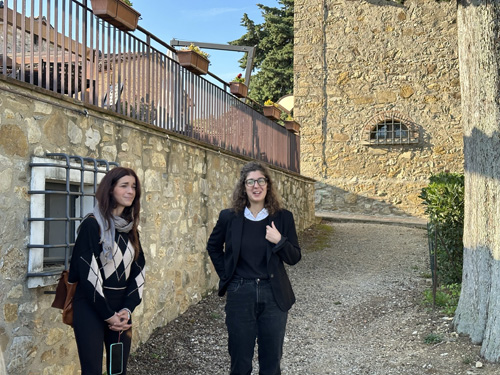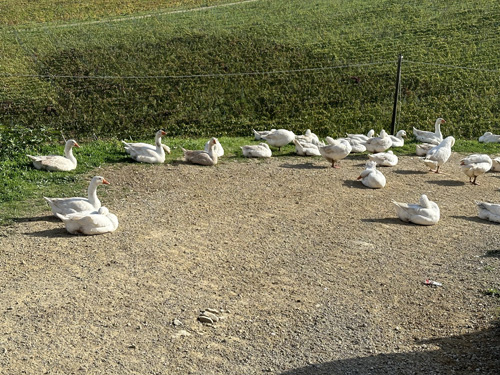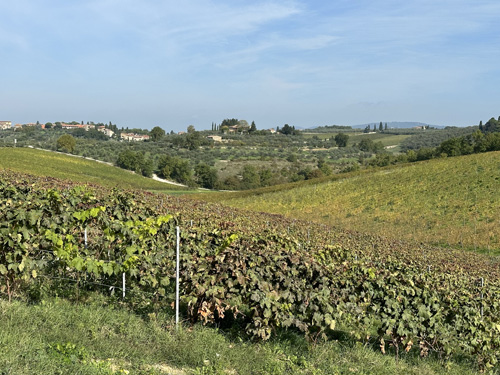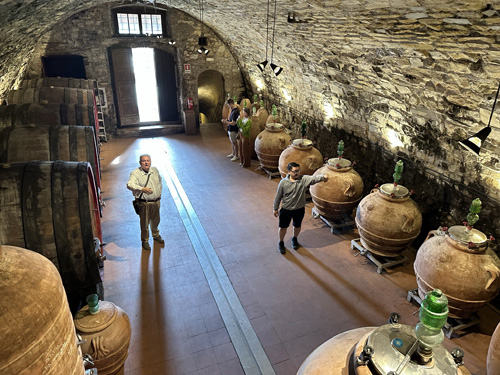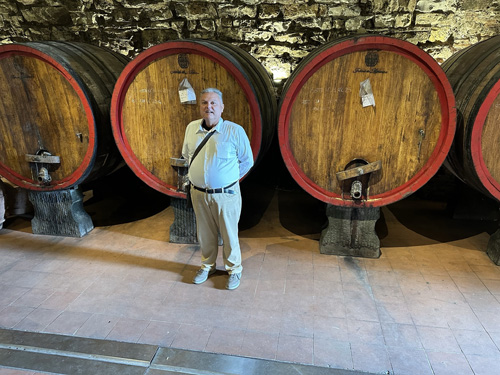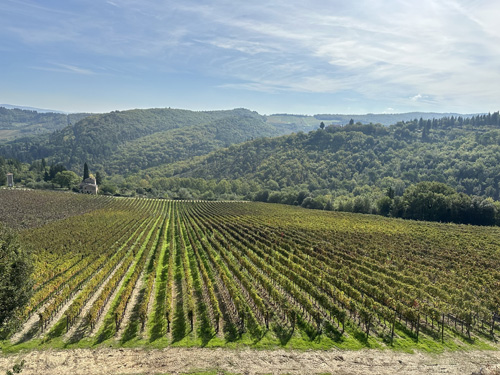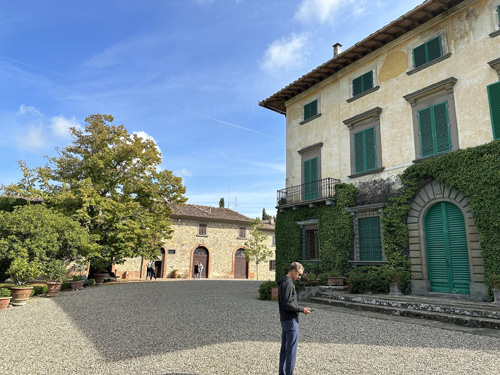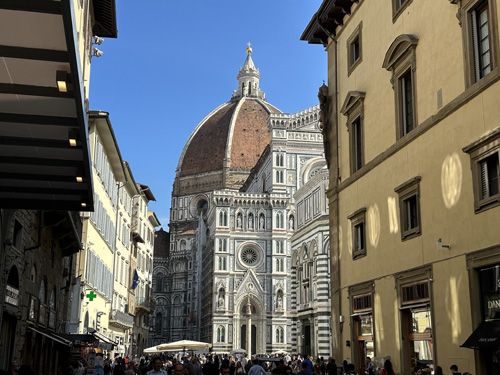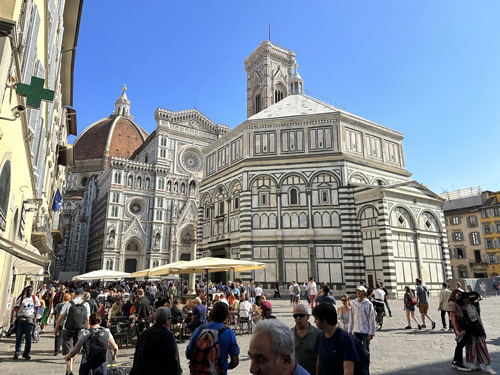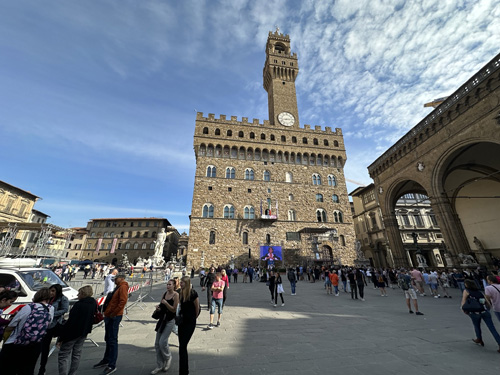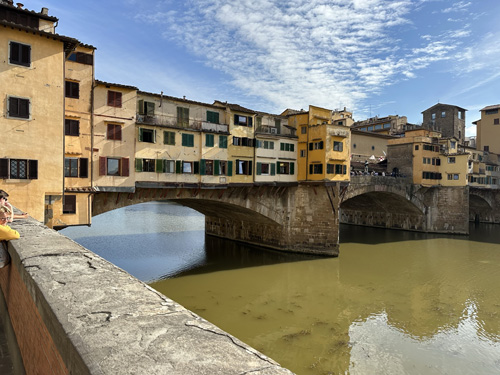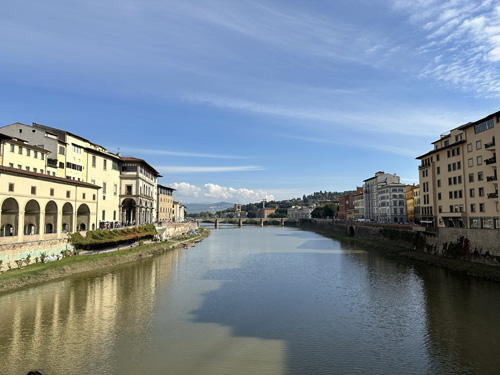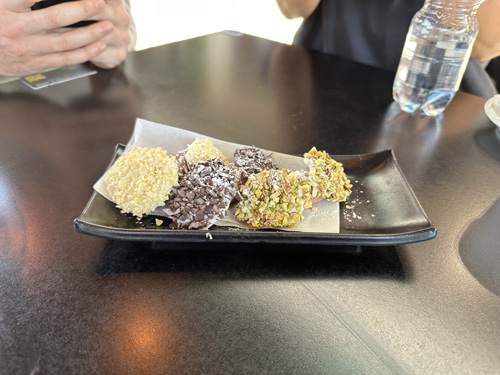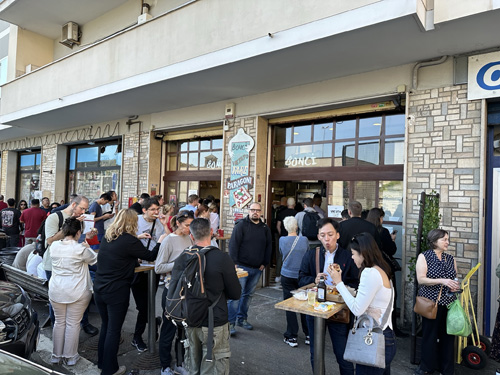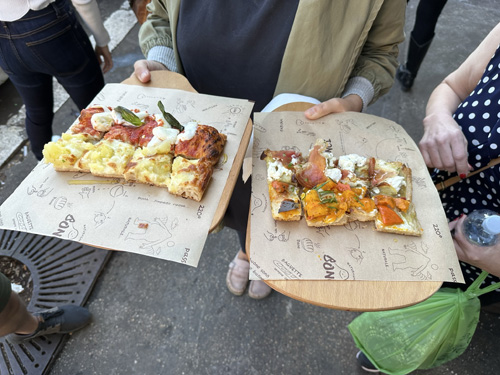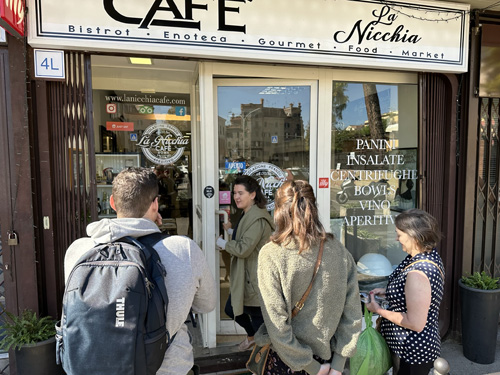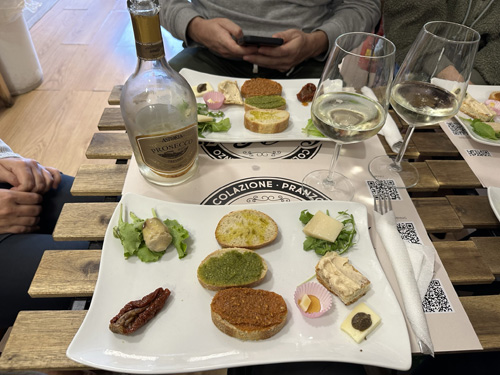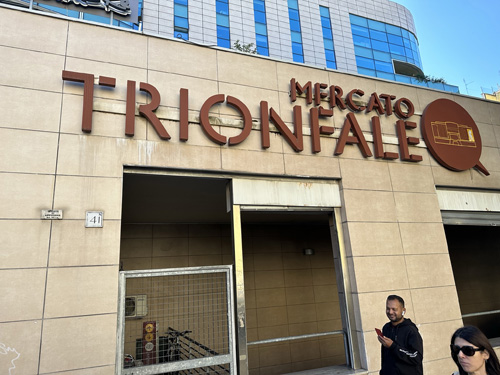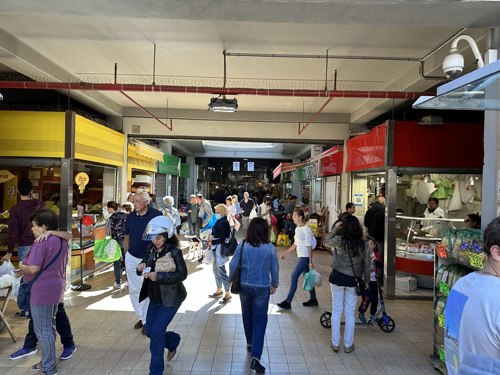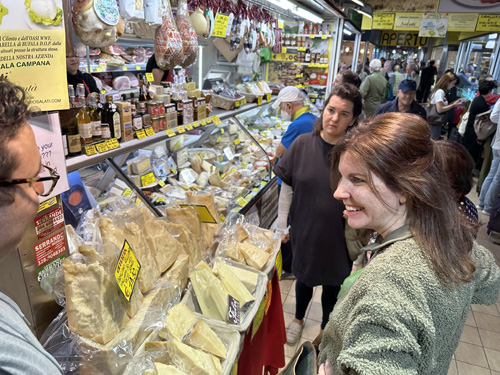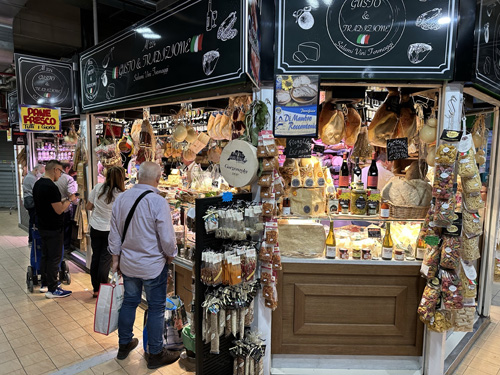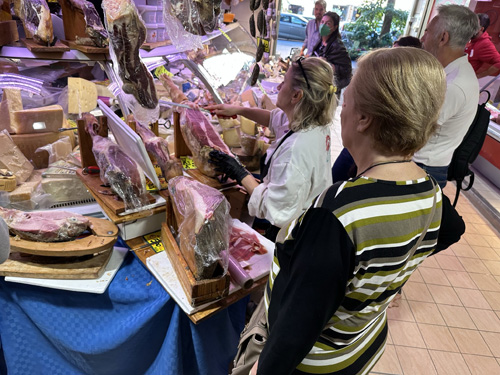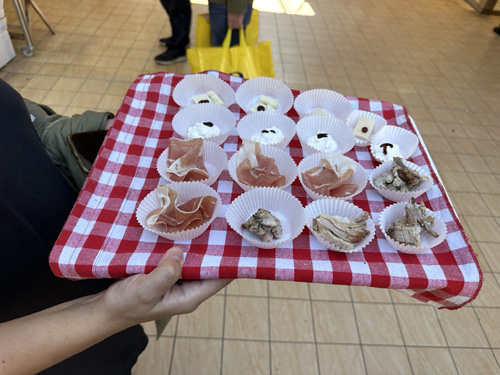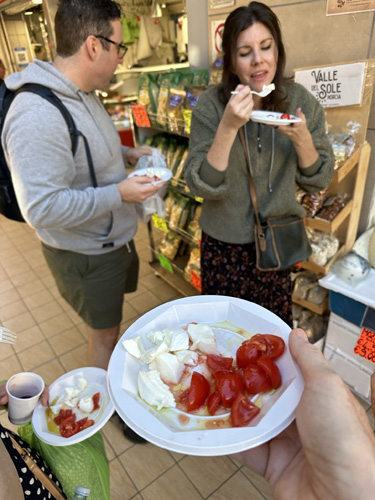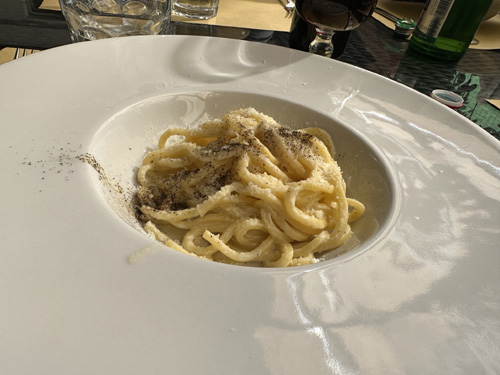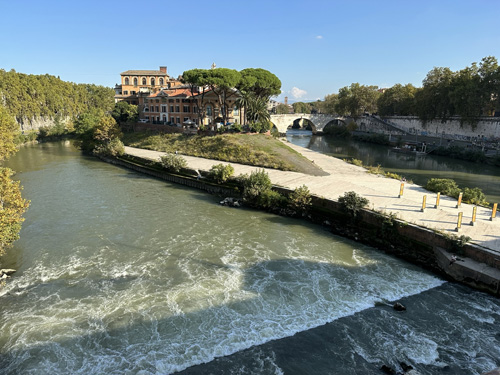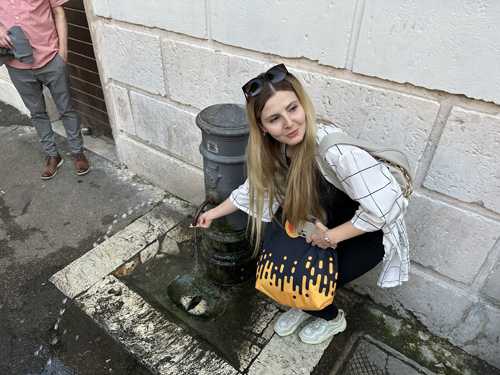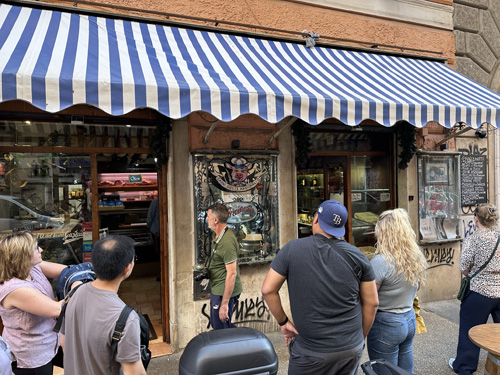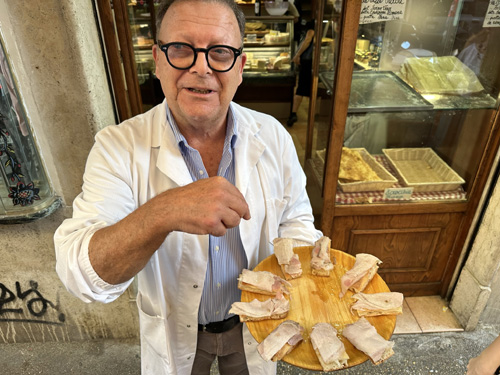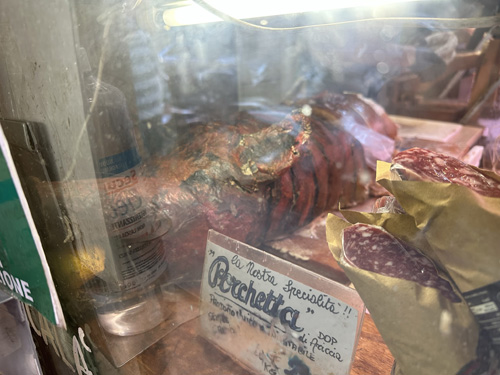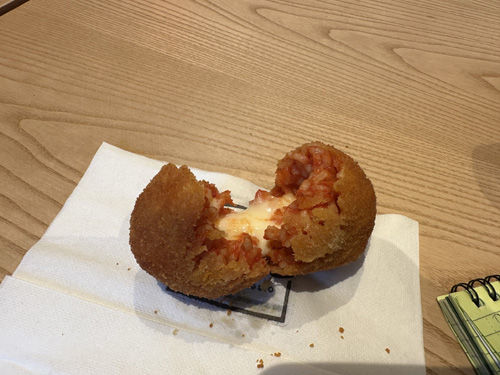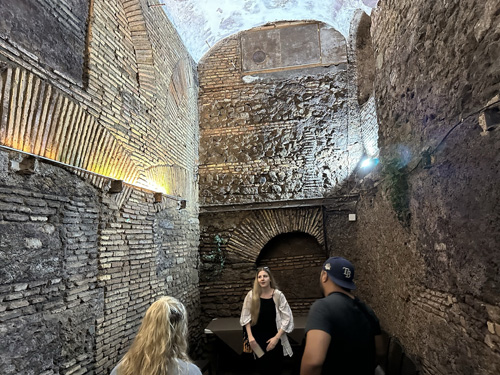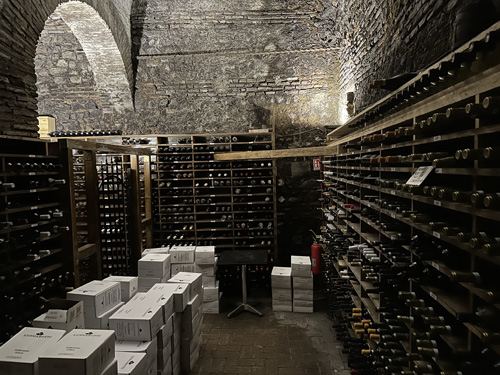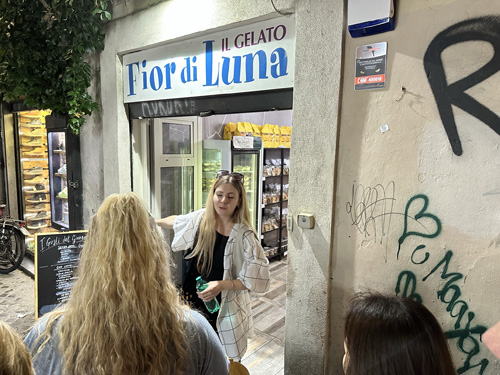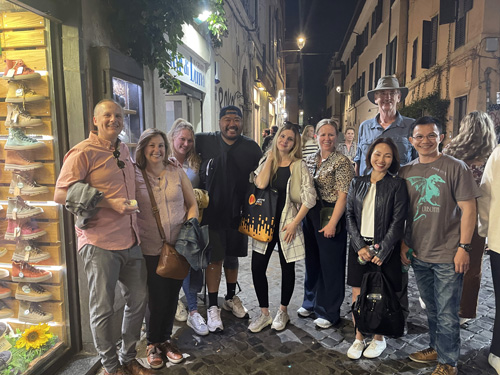Hal Jespersen's Italian Campaign Trip, October 2022
This is Hal’s report on his trip to Italy for a tour of the World War II Italian Campaign, hosted by Stephen Ambrose Historical Tours. It is my second tour with Ambrose, the first being the 75th anniversary of D-Day in 2019, followed by Parton’s advance across France and Belgium to Germany. That travelogue is here. All the photos, except those as noted, are from my relatively new iPhone 14 Pro. There are few mentions of weather because it was almost perfect for the entire trip: sunny, low-60s mornings to mid-70s.
This report is broken into four pages.
- Pre-tour arrival in Italy—this page (I flew to Rome three days before the Ambrose tour started in Sicily and this slack time involved no WWII content, just sightseeing and food/wine tours.)
- Sicily Campaign
- Italian Campaign: Salerno to Sorrento
- Italian Campaign: Winter Line and Anzio to Rome
Contents — Part 1
Wednesday, October 12 — To Rome
I flew to Rome on United Airlines via Frankfurt, having a comfortable seat in Polaris class on a 777. (It would have been better with two more inches of lie-flat legroom. I use a jet lag program on my iPhone called TimeShifter and it mandated that I sleep within an hour after takeoff and for almost the entire flight.) Frankfurt airport is pretty dreary for a two-hour layover. I had my taste buds oriented to a delicious hot wurst mit senf, but all I could find were cold sandwiches.
Thursday, October 13 — Rome
The Lufthansa connection to Rome Fiumicino was a two hour layover. In typical European style, business class on this airbus was actually regular coach, but with the center seat roped off. Once at Fiumicino, I got my bag, had no customs or passport control, and I hopped onto the Leonardo direct train to Rome’s Termini station. It was not a very scenic route, but the train was convenient, fast, and on time—thanks Mussolini! I selected my hotel with the station in mind; UNAHotels Decò Roma is less than two blocks away. It’s a reasonably modern hotel inside, although it suffers from the typical big city defect of letting traffic noise in; and the Romans make a lot of it. There was constant noise throughout the night—including a few alley cat versus seagull screaming death matches—that forced me to sleep with earplugs and a pillow over my head.
I spent the afternoon and early evening walking around scenic Rome, mostly the outside of the Coliseum, the Forum, and Palatine Hill. This was not an in-depth visit to landmarks because I expect Ambrose to do that for us on the last day of that tour. I ate at a sidewalk café off Via Nationale because one of the waiters followed me up and down the street hawking his menu. After sitting down I found that the restaurant was named House of Meat, which gave me pause, but I tried the pizza and it was quite good, more like a flatbread than a traditional pizza—no tomato sauce, just mozzarella and prosciutto. (Upon further reflection, I realize that although the waiters said Pizza, the menu actually said Pinsa, which it turns out is a Roman specialty made with a different variety of flour than Neapolitan pizza.) Down the street I had an excellent coconut gelato, a large cone that was about 40% of the prices in California.
Friday, October 14 — Florence
After a poor night for sleeping I was up early for a 90-minute express train from Termini to Firenze. I booked a seat in the Quiet Car and it was really nice—one quarter full and no speaking or phoning. Good Wi-Fi too. My first activity was a tour booked through Viator, Small-Group Wine Tasting Experience in the Tuscan Countryside. Our guide Eva told us a little bit of area history as we drove 40 minutes south into Chianti Classico country, in the direction of Siena. We visited two wineries, both outside the town of San Donato.
First was Casa Emma, a boutique winery shipping only 80K bottles per year, and to no US distributors. We had two whites that were predominantly Vermentino blends, not too memorable. Then a Chianti Classico 2018 Riserva and a Super Tuscan that was 50% Merlot. Both these were quite good; the Riserva could use more bottle time.
Second was Fattoria Montecchio, housed in a series of beautiful ancient farm buildings. We were met by Guido who gave us an interesting speech about the winery history and Chianti. Here we had four reds: 2018 Classico; 2017 Riserva; 2016 Gran Selezione; 2018 Super Tuscan that was 80% Cabernet. All four were excellent. This time we had ample supplies of bread, cheese, meats, olive oil, etc., enough so that I didn’t have lunch back in Firenze.
I spent the afternoon wandering around the old city. The weather was perfect, but I really pooped out, fatigued by lack of sleep. The city was super crowded so I didn’t actually go into any of the attractions that had long lines, such the Duomo or the Uffizi. I did walk across the Ponte Vecchio and along the Arno. The train back to Rome was different than the morning’s—completely full with tickets 3X more expensive and the Wi-Fi was pretty sluggish.
Back in Rome I was really wiped, so dinner was a tomato and mozzarella panino purchased at Termini. But I vanquished the hotel noise problem by remembering that I had a White Noise application on my iPad, although I had never used it previously. I played a loud simulated air conditioner all night and had a great night’s sleep.
Saturday, October 15 — Rome Food Tours
Hard to believe, but I actually booked two walking food tours in one day. Food tours are one of my favorite city activities and Rome is so crowded that I could not anticipate getting into any of the museums or monuments. The first was in the vicinity of Vatican City, the Prati neighborhood, which I reached by metro from Termini to Cipro. They have very convenient frequent service, although the system is the smallest in Europe. The motormen have lead feet and I was almost knocked on my butt at a few of the station stops. Our guide was a Romanian woman named Luka who has lived in Rome for 12 years and has excellent English as well as a great knowledge of Italian cuisine. We spent three hours over five stops and about 20 different courses/tastes. There were only four guests—all US—so we had nice conversations.
- La Pasticceria Siciliana: A nice sidewalk bar for breakfast of coffee and cannoli.
- Bonci Pizzarium: This place was jammed, with 30-50 people lined up outside. The pizzaiolo is supposedly known as the Michelangelo of Pizza and specializes in unusual combinations changing daily, served in small square pieces. We had four types, including one with potato (very Roman) and another with pumpkin. We also had Suppli al Telefono, a fried rice ball stuffed with mozzarella that is similar to Arancini in Sicily. (Suppli rice is cooked in tomato sauce before frying, arancini in boiling water. The "al Telefono" refers to the way the embedded cheese pulls apart in strings.)
- La Nicchia Café: We started with a bottle of Prosecco and had a tray of a dozen small bites. The highlights were 30-year-old Balsamic vinegar on a cheese slice, two different pestos, and a fabulous parmigiana cream with white truffles.
- Trionfale farmers market: A bustling indoor market with dozens of vendors. We had a number of samples, including porchetta, stracciatelle, glasses of Italian Syrah and Sauvignon Blanc, a beautiful plate of fresh mozzarella and tomatoes, and an excellent melanzane (eggplant) parmigiana.
- Finally, Al Giardano del Gatto e la Volpe: We had a bottle of young Chianti and a choice of pasta. I had cacia e pepe, a Roman specialty made with only cheese and pepper. We finished up with Tiramisu, which was really espresso-forward.
The second tour was in the evening in Trastevere (tras-TEV-er-ay), a 2.5 mile walk across the Tiber to the southwest. This used to be a lower class neighborhood, but has now been gentrified and is quite trendy. It was a larger tour, attended by eight, led by a nice young Slovak woman, Dominica. (I guess native Italians don’t like to lead food tours.) She was also very knowledgeable and engaging and an excellent English speaker. She also is a budding opera mezzo soprano, but we couldn’t coax her to perform for us.
There were five stops. First was La Norcineria di Iacozzilli, a small shop specializing in pork: We started with a cheese tasting of Parmigiano Reggiano and Pecorino Romana, a glass of a Marches wine called Ciu Ciu San Carro (rather strong), and an open face porchetta sandwich; this porchetta tasted like a cross between ham and turkey—delizioso.
Alice Pizza: it looks like a woman’s name, but uh-LEECH-ay actually means anchovy. They specialize in pizzas cut into various rectangular sizes to the customer’s order. We started with a large, hot suppli rice ball, and then three small pizzas slices—a cold mortadella, a Margherita, and speck and provolo cheese, also not hot. (Speck is essentially smoked prosciutto.)
404 Name Not Found (no one explained where this name came from to apply to a quaint traditional Italian restaurant): Two classic Roman pastas—amatriciana and carbonara. (The other two classics are cacio e pepe and gricia.)
Ristorante Spirito di Vino: It is housed in a beautiful old building that may be as old as the Coliseum and we went downstairs to visit their ancient wine cellar, but the food was outside—a tiny portion of slow-cooked pork stew whose Italian name escaped me, but Dominica said it was an original creation of this chef. The stew and the 100% Sangiovese wine served with it were delicious.
Finally Fior di Luna for gelato. By 7:30 or so, Trastevere was absolutely crawling with people. I had half stracciatella and half zabaglione. (No nocce di cocoa here.) I have had better, but it was a nice end to a day of gastronomic overload.
Not wanting to risk the Roman cobblestone streets and erratic drivers in the dark, I taxied back to the hotel.
